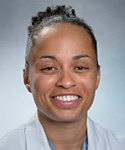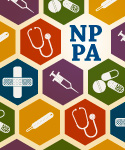January 20th, 2016
4 Indirect Ways Outpatient PAs Can Contribute to Practice Growth
Bianca Belcher, MPH, PA-C
In many clinical practices PAs are integral members of the patient care team. We round. We order and interpret labs and imaging. We assist in the OR. We see patients in clinic. We contribute significantly day to day to make sure we provide the best care possible, and we formulate bonds with our patients and their families, which undoubtedly contributes to patient retention and direct referrals. I think our skill set and vantage point in healthcare has positioned us, if we so choose, to do more. Practice growth and the business side of medicine is not for everyone, but if you have an academic or financial interest in more than clinical work, consider becoming more involved in one of these ancillary aspects of medicine.
- Clinical Feedback to Referring Providers
In my practice, this has probably been the highest-impact indirect way that I have contributed to practice growth. In our urgent surgical service we receive patients from a wide range of referral sources (varying by geography, specialty, and time of day). Every patient who is referred to us from an outside institution receives either a phone call or an email within 48 hours thanking them directly for the referral and updating them on the patient’s status. Many patients who are referred to us come from outside emergency departments or EMS and once the patient is transferred, these providers often have no idea of the outcome. We send an email with before and after imaging as well as a case synopsis and outcome (good or bad). We include our direct contact information in case these providers have follow-up questions. These emails contain high-level/complex medical information that could not be duplicated by a non-clinician such as an administrative assistant (AA). This peer-to-peer contact has been invaluable in opening up important patient care dialogue as well as developing a steady stream of new referrals.
TIP: In the beginning we had difficulty tracking down specific ED providers at hospitals outside of our EMR system. Often times transfer paperwork that came with the patient was not scanned in a timely fashion. In order to circumvent this problem, we began sending our feedback emails to the ED Chief of the transferring hospital and asking him/her to forward the email to the direct care team involved, including MDs, mid-levels, nurses. This allowed the email to reach the entire team (not just the attending) as well as department leadership.
- Lectures/Presentations
There are several opportunities to provide community education and awareness of your practice through lectures and presentations. All clinicians within our division are expected to give lectures. As a group, we aim for an average of 2 lectures per month or 24 lectures per year, which helps get our names and faces out in the community. A sample of our target audiences includes:
- Community/Non-urgent referral sources: Primary care and neurology practices
- Urgent referral sources: Emergency departments and EMS
- Neurology nurses: Spending a short amount of time educating nurses on how to best take care of their patients goes a long way towards improved patient safety and mutual professional appreciation.
- Understanding Billing at your Institution and in your Specialty
I do realize that this is easier said than done in some institutions, but I do feel strongly that a good understanding of what services are billable — for both you and the physician(s) with whom you work closely — can change practice revenue dramatically. For example, in my practice, we were all very familiar with the surgical global period of 90 days, the duration of time in which we could not bill for services related to our operation. However, we did not know that most neurological endovascular procedures do not have a global period. In fact, only endovascular carotid stenting procedures have a global period, which means that we are able to bill subsequent hospital visits and clinic follow-up on diagnostic angiograms, embolizations, thrombectomies, etc. In this example, our day-to-day patient care did not change, but we are now reimbursed for work we were already doing.
- Analyzing your Current Practice for Inefficiencies
 PAs are in a unique position within many medical practices because we are one of the few people who interact with patients from A to Z. In an outpatient practice, a PA may be involved in everything from clinic setup/prep to surgery and postoperative recovery. AAs are heavily involved on the front of scheduling/insurance preauthorization and then again on the back end of scheduling post-op/follow-up clinic appointments. Unfortunately, they aren’t privy to much in between. On the other hand, physicians are typically involved in complex medical management or the surgical procedure, but not much before or after. PAs see it all. Use this distinctive point of view to identify practice inefficiencies, offer solutions, and oversee the implementation. An example of this was educating our AAs on common surgical procedures, their predicted length of stay, and typical postoperative follow-up time. After educating them and developing a cheat sheet, if they saw a booking for a common surgical procedure, they were able to predict that patient’s length of stay, set up their postoperative appointment, and send the patient a packet containing all appointments — all prior to surgery. This helped decrease phone calls to the office from rehabs and patients trying to set up postoperative appointments.
PAs are in a unique position within many medical practices because we are one of the few people who interact with patients from A to Z. In an outpatient practice, a PA may be involved in everything from clinic setup/prep to surgery and postoperative recovery. AAs are heavily involved on the front of scheduling/insurance preauthorization and then again on the back end of scheduling post-op/follow-up clinic appointments. Unfortunately, they aren’t privy to much in between. On the other hand, physicians are typically involved in complex medical management or the surgical procedure, but not much before or after. PAs see it all. Use this distinctive point of view to identify practice inefficiencies, offer solutions, and oversee the implementation. An example of this was educating our AAs on common surgical procedures, their predicted length of stay, and typical postoperative follow-up time. After educating them and developing a cheat sheet, if they saw a booking for a common surgical procedure, they were able to predict that patient’s length of stay, set up their postoperative appointment, and send the patient a packet containing all appointments — all prior to surgery. This helped decrease phone calls to the office from rehabs and patients trying to set up postoperative appointments.
I know there are several PAs out there contributing to practice growth and the business development of medicine who have been doing so for years. Do you have any other suggestions for new graduates or experienced PAs just looking to get more involved in the non-clinical aspects of medicine?



